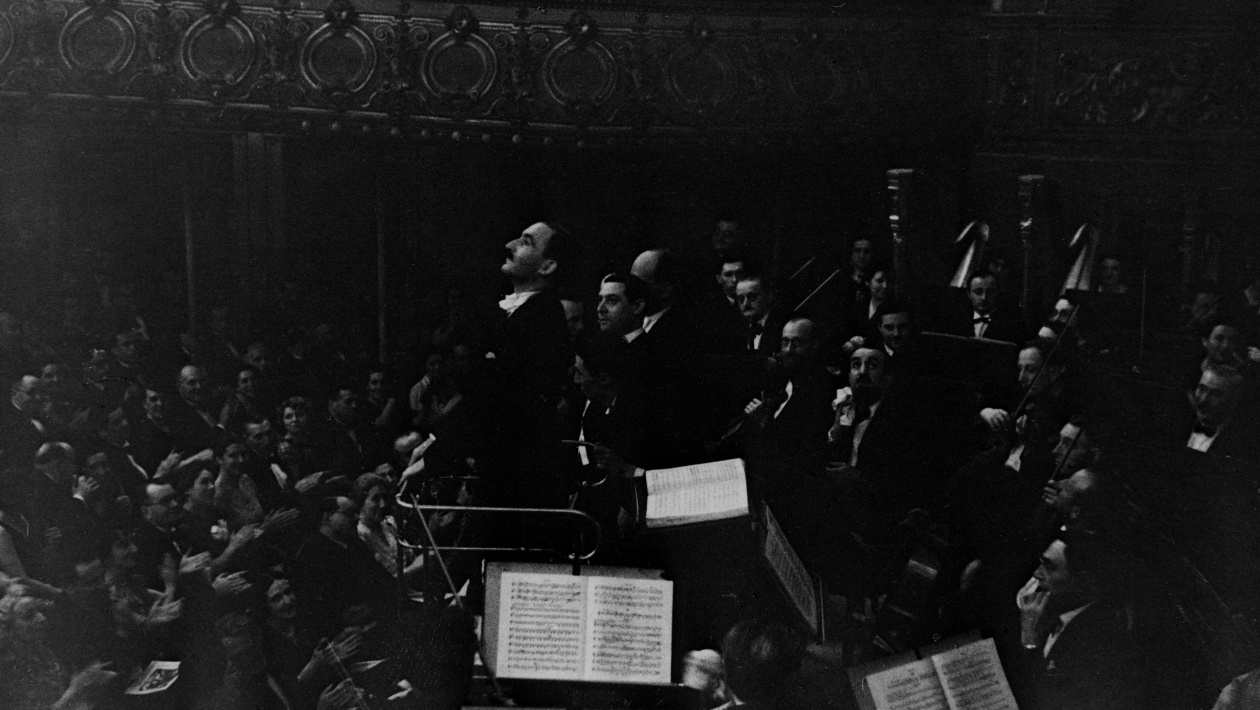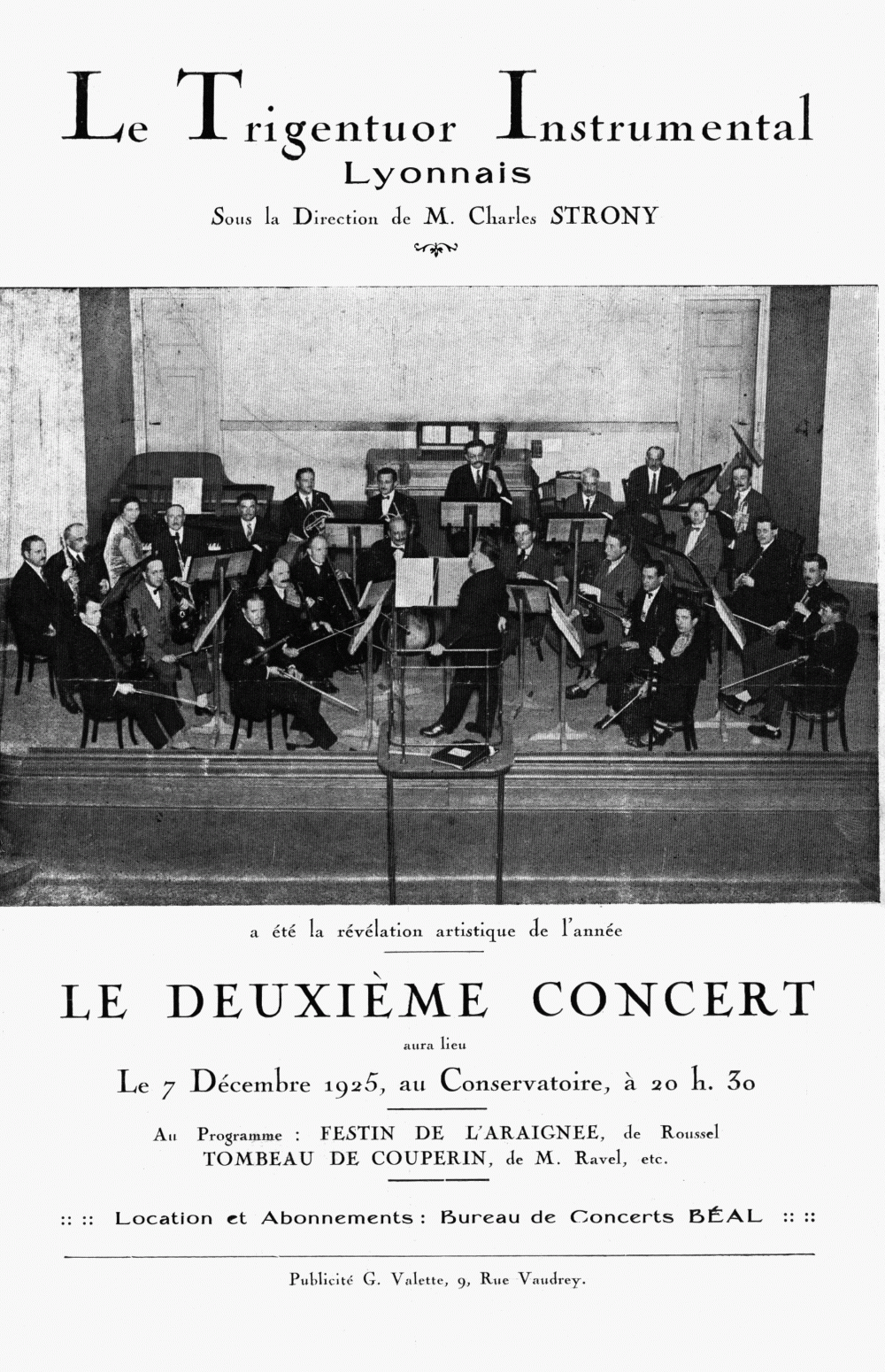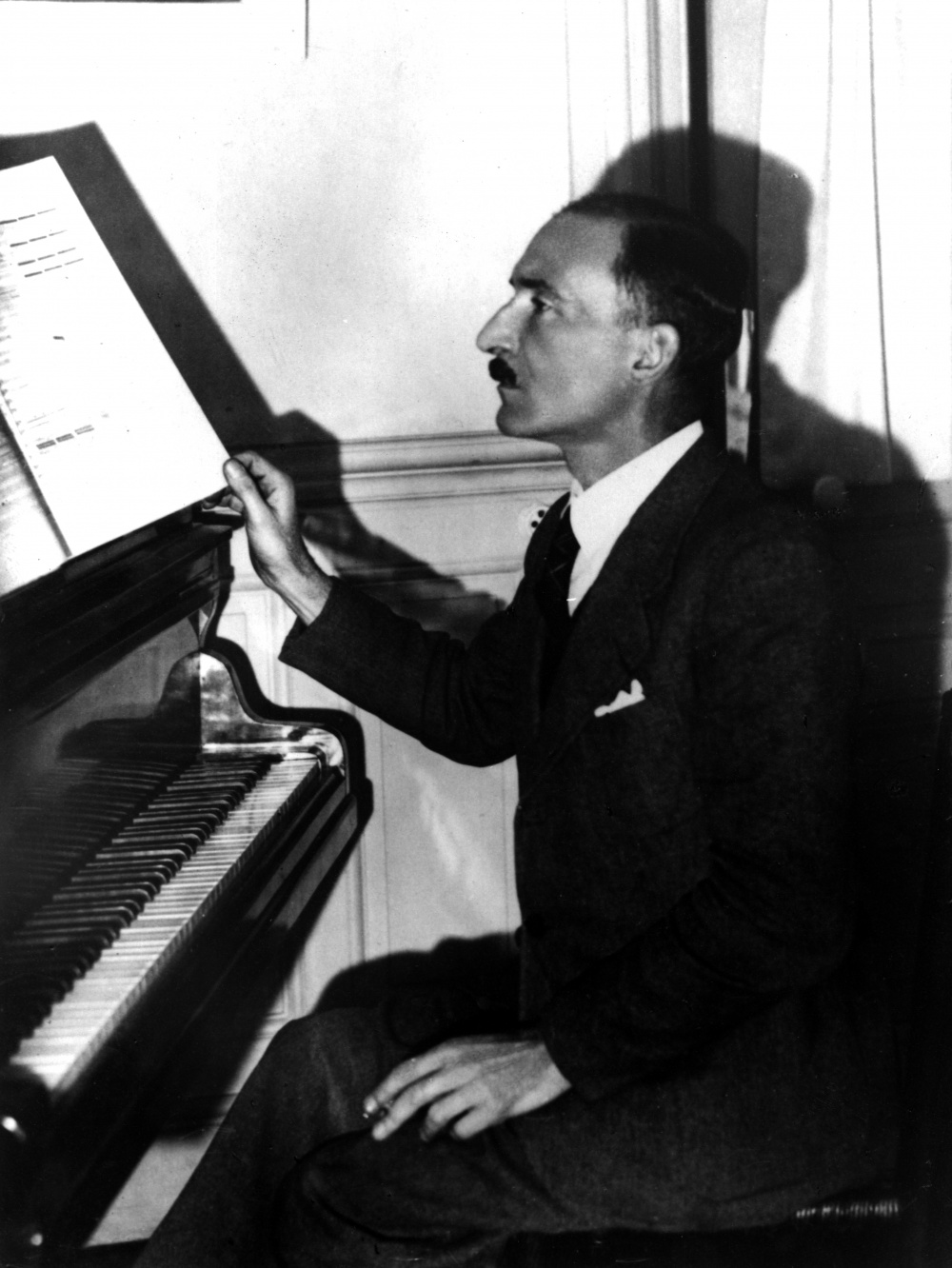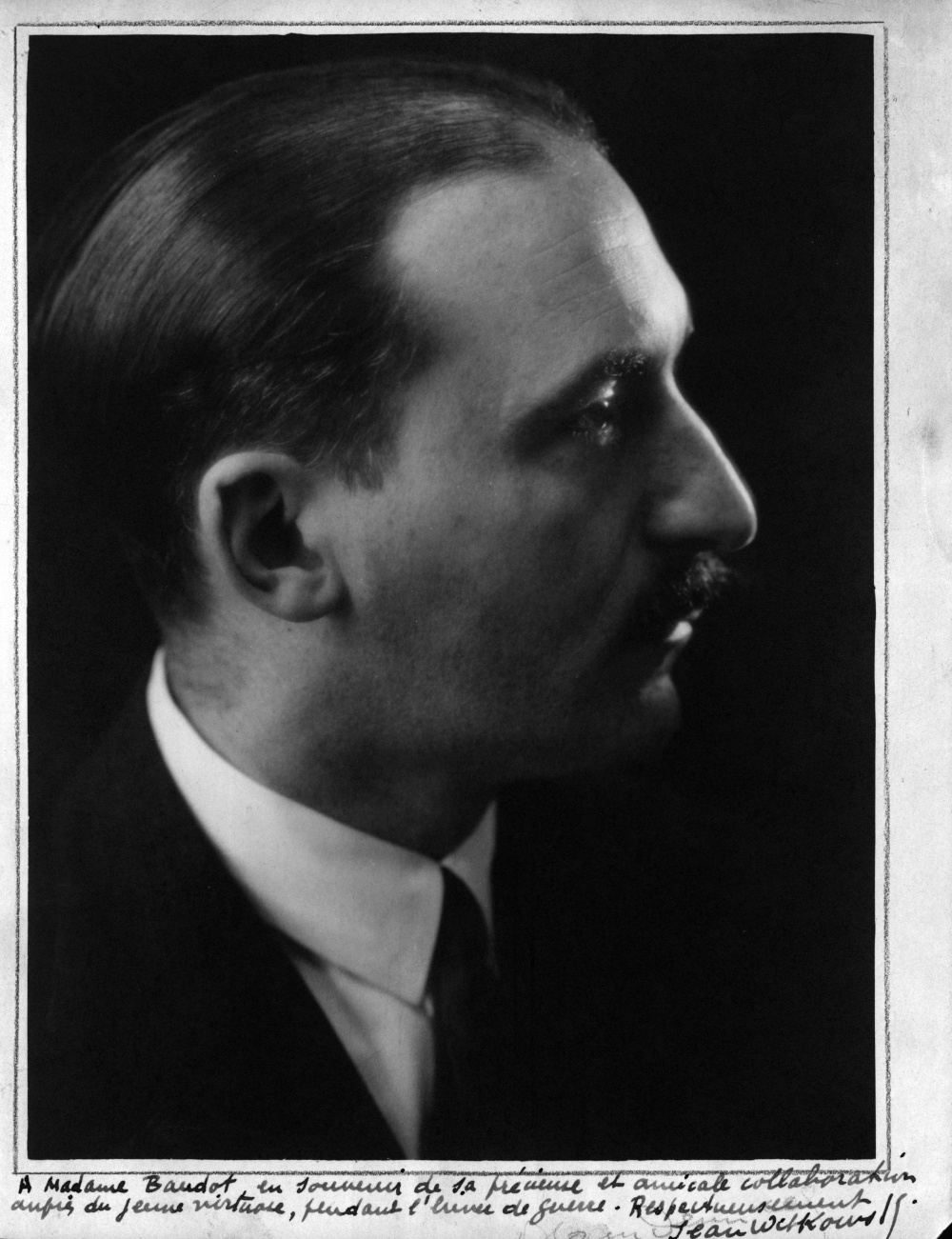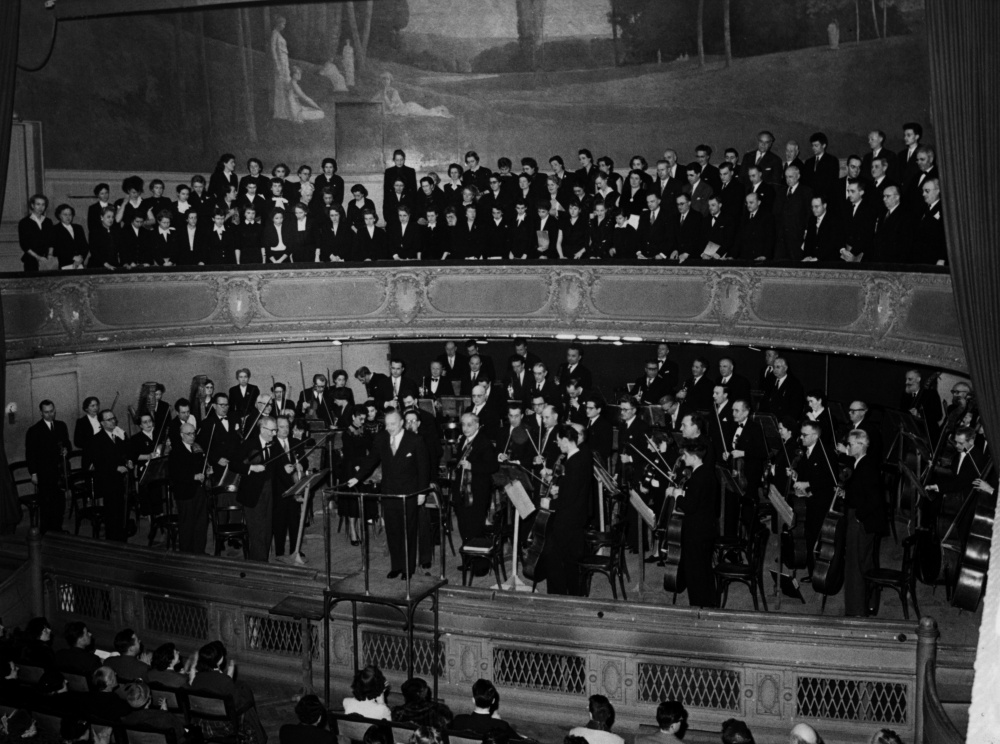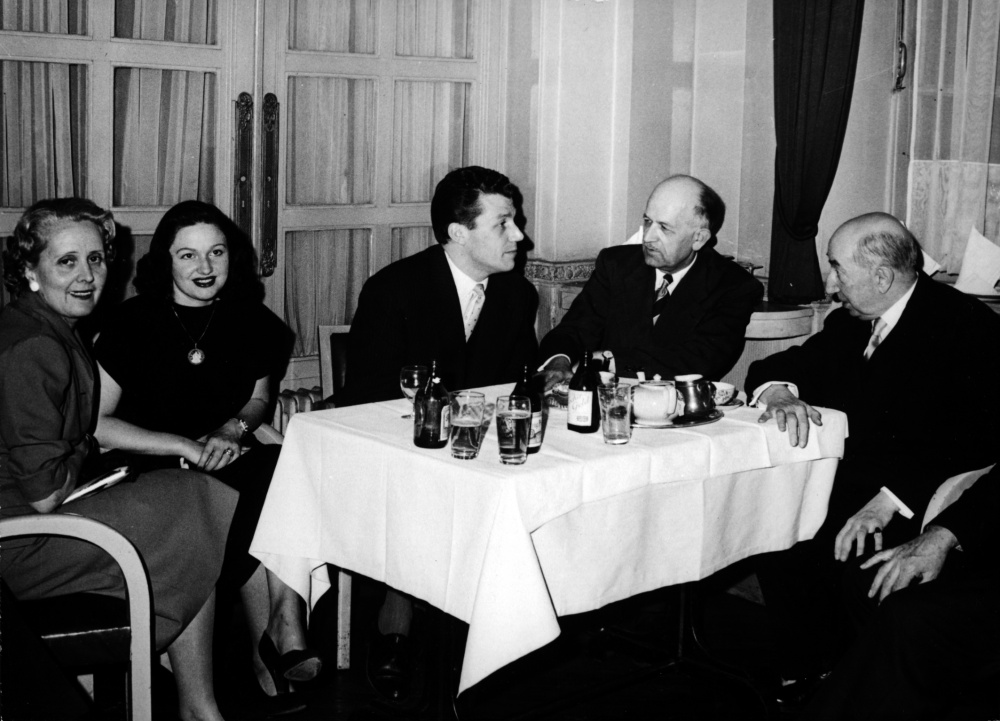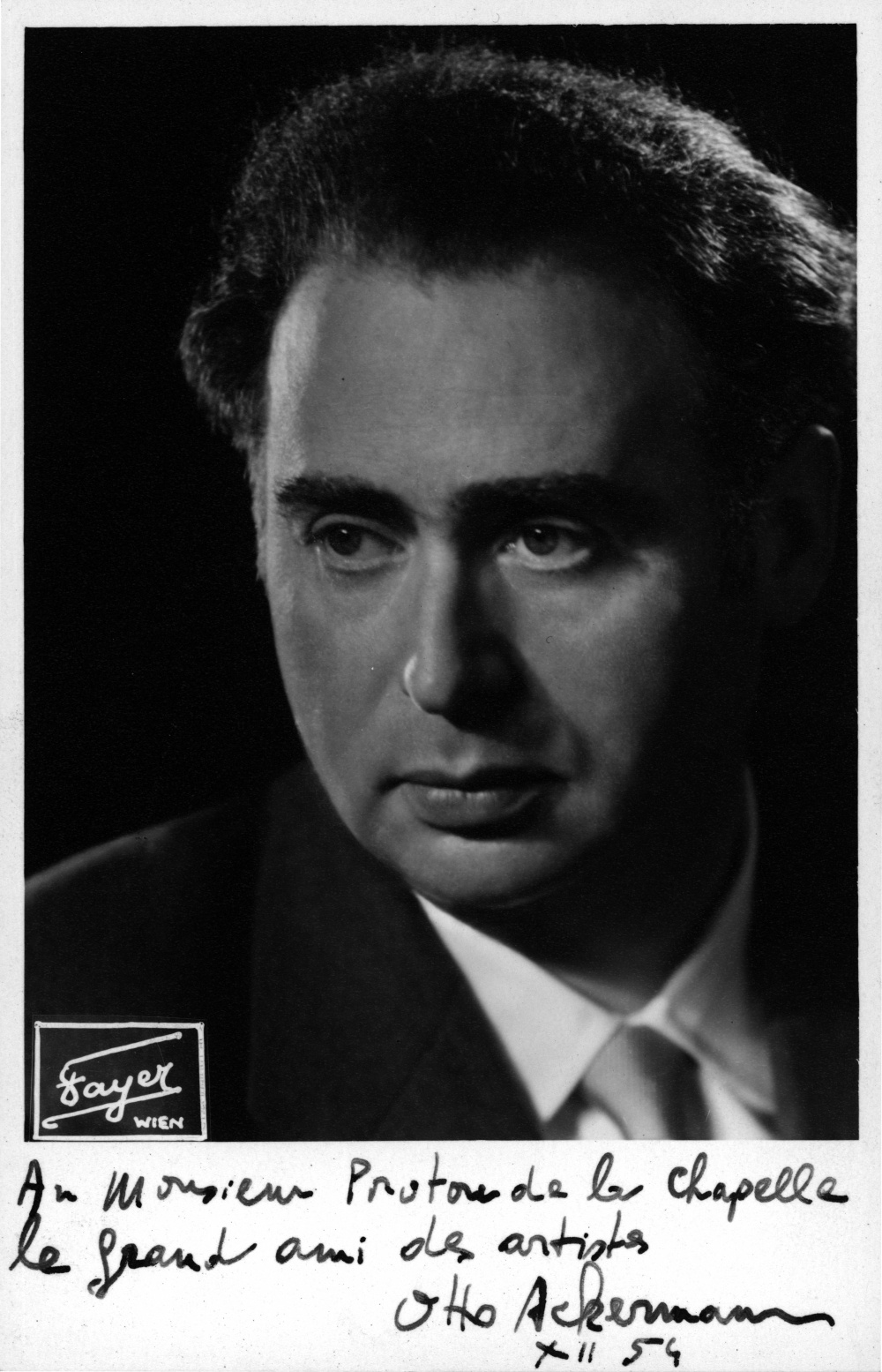The Association philharmonique de Lyon
Before the Second World War, Lyon’s symphonic scene changed. In 1938, Radio Lyon formed an orchestra, the Orchestre radio-symphonique de Lyon PTT, which recruited many members of the Société des Grands Concerts. To stem the tide, Georges Martin Witkowski led a merger with the Trigentuor, an ensemble of 30 musicians founded in 1925. The new orchestra called itself the Association philharmonique de Lyon. It became a professional orchestra, but because the symphony concert season was not sufficiently remunerative, many of the musicians also worked for the Opera or the Radio, or even exercised other professions.
Jean Witkowski
From the 1929/1930 season onwards, Georges Martin Witkowski was replaced increasingly regularly as conductor by his son Jean Witkowski. On his father’s death in 1943, the latter officially took over the conductorship of the orchestra. The orchestra continued its activities throughout the war and in May 1944, after a concert by the Berlin Philharmonic Orchestra imposed by the Germany military command in Lyon, the Rameau concert hall resonated with a patriotic concert: with Paul Paray conducting and ushers wearing tricolour rosettes, the Association philharmonique played Ravel’s eminently symbolic La Valse, then a Marseillaise sung by a standing audience, with Paray facing the audience as he conducted.
André Cluytens
Another conductor, André Cluytens, also marked the history of the Association philharmonique. Cluytens had been conducting the Opera orchestra since 1941 when, on 24 June 1949, he conducted the very first concert given by the “Philharmonique” – renamed “Orchestre du Festival” for the occasion – in the Théâtre antique de Fourvière, recently rediscovered and inaugurated, as part of the Festival de Lyon-Charbonnières. Up until his death in 1967, Cluytens conducted the orchestra on many occasions, including on 13 February 1955 for the orchestra’s 50th anniversary.
Robert Proton de la Chapelle
Jean Witkowski died suddenly in 1953, a few months after the Schola Cantorum’s 50th anniversary and 10 years after his own father’s death. The artistic direction of the Philharmonique was entrusted to the association’s vice-president, the industrialist Robert Proton de la Chapelle (1894-1982). He was an excellent musician who composed and wrote about the artistic life under the pen name of Robert de Fragny. He was assisted in his task by Marcelle Baudot, Jean Witkowski’s right-hand woman, who was appointed general secretary. Her wide-ranging responsibilities including looking after guest artists, recruiting the orchestra’s musicians and performing secretarial duties for the conductor, all on a virtually volunteer basis. At the time, the orchestra was still not a permanent organisation, so at the beginning of each season, 80 musicians were recruited to perform the 10 concerts; almost half came from the Opera, a quarter from the Orchestre radio-symphonique, and the remainder were self-employed. The work schedule was drawn up to slot between performances at the Opera and some weekends were particularly trying when the two schedules were combined.
The post-war period
After the war, the orchestra forged ties with world-class conductors. In addition to André Cluytens and Paul Paray, mentioned above, the orchestra worked with Otto Ackermann (who may have left the deepest mark on the orchestra), Jascha Horenstein, Jean Martinon and Jean Fournet. During the 1953/1954 season, the time George Enescu spent with the orchestra, a few months before his death, left indelible memories; the Romanian conductor, already tired, was seated as he conducted his Orchestral Suite No. 2 and pieces by Mozart and Franck, with Aldo Ciccolini at the piano. Pianists Samson François, Yves Nat and Pierre Sancan were regular guests. Concertgoers in Lyon were introduced to the works of Arthur Honegger, Luigi Dallapiccola, Henri Dutilleux and Francis Poulenc.
The Société philharmonique de Lyon
The Philharmonique’s finances – which relied entirely on its members’ donations – and the musicians’ status remained precarious. Those who played at the Opera had neither job security nor social security cover until a modest welfare and retirement benefit plan was introduced. For want of any public funding, the Association philharmonique was not in a position to offset the lack of cover. The disbandment of the Orchestre radio-symphonique in 1964 left 45 musicians without a job. Robert Proton de la Chapelle, who was elected to the city council the following year on Louis Pradel’s list and appointed cultural councillor, did what he could to improve their lot by persuading the council to take on 24 of the dismissed musicians as members of the Opera orchestra.
In 1966, the Association philharmonique amended its articles and adopted the name of Société de l’Orchestre philharmonique de Lyon, subsequently simplified in 1969 to Société philharmonique de Lyon.
